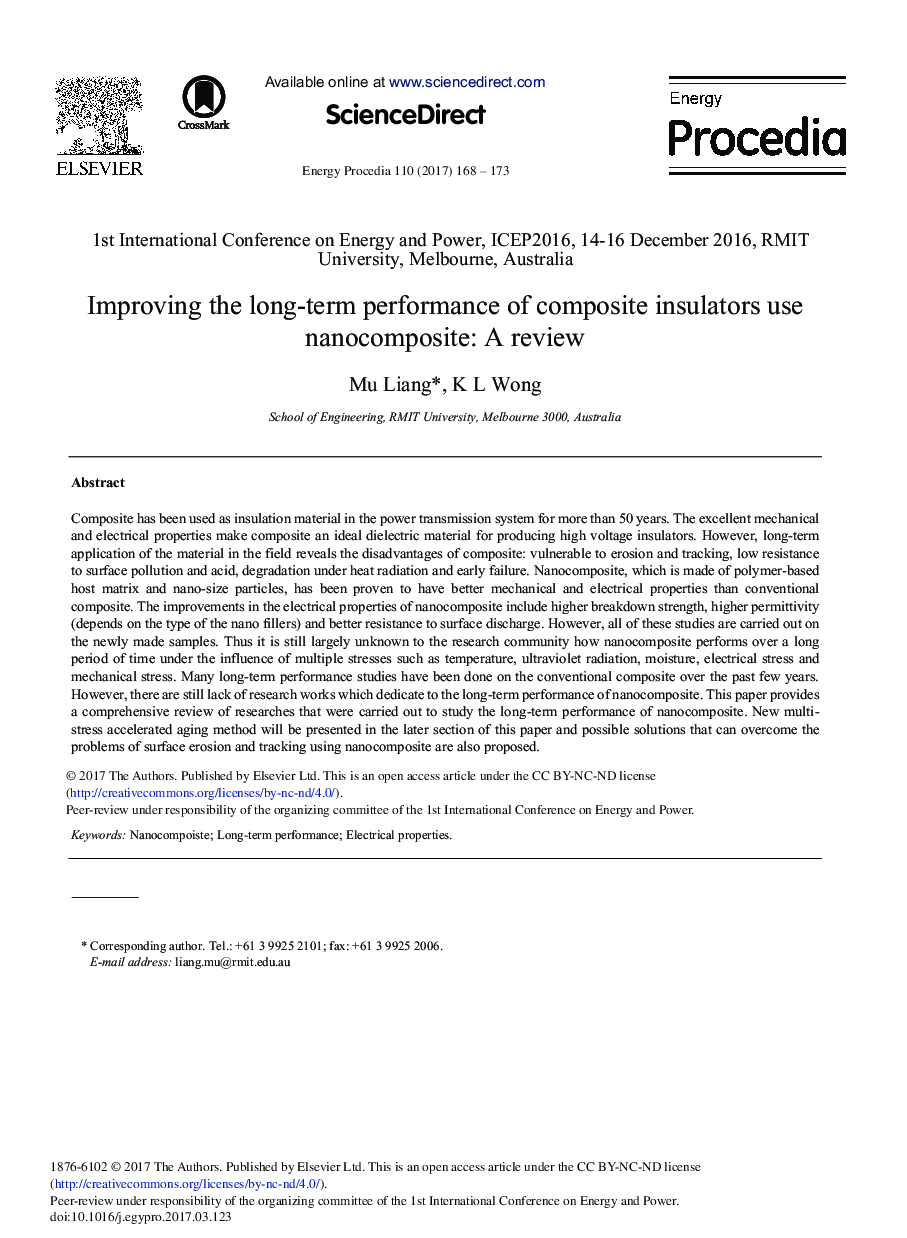| Article ID | Journal | Published Year | Pages | File Type |
|---|---|---|---|---|
| 5445722 | Energy Procedia | 2017 | 6 Pages |
Abstract
Composite has been used as insulation material in the power transmission system for more than 50 years. The excellent mechanical and electrical properties make composite an ideal dielectric material for producing high voltage insulators. However, long-term application of the material in the field reveals the disadvantages of composite: vulnerable to erosion and tracking, low resistance to surface pollution and acid, degradation under heat radiation and early failure. Nanocomposite, which is made of polymer-based host matrix and nano-size particles, has been proven to have better mechanical and electrical properties than conventional composite. The improvements in the electrical properties of nanocomposite include higher breakdown strength, higher permittivity (depends on the type of the nano fillers) and better resistance to surface discharge. However, all of these studies are carried out on the newly made samples. Thus it is still largely unknown to the research community how nanocomposite performs over a long period of time under the influence of multiple stresses such as temperature, ultraviolet radiation, moisture, electrical stress and mechanical stress. Many long-term performance studies have been done on the conventional composite over the past few years. However, there are still lack of research works which dedicate to the long-term performance of nanocomposite. This paper provides a comprehensive review of researches that were carried out to study the long-term performance of nanocomposite. New multi-stress accelerated aging method will be presented in the later section of this paper and possible solutions that can overcome the problems of surface erosion and tracking using nanocomposite are also proposed.
Related Topics
Physical Sciences and Engineering
Energy
Energy (General)
Authors
Mu Liang, K.L. Wong,
